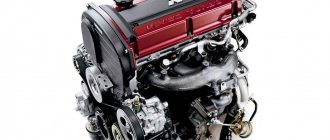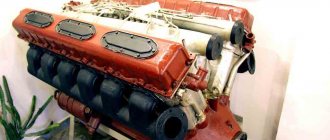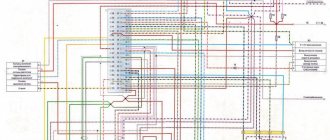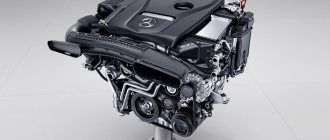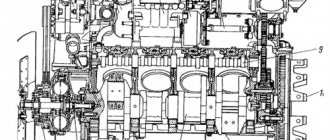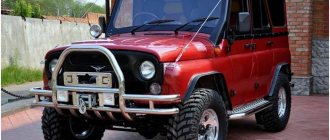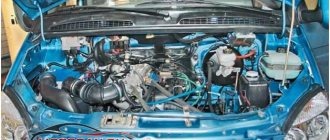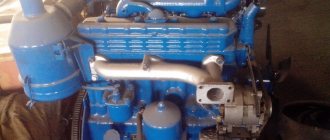Nowadays you can find a huge amount of goods. It can be divided not only by quality, but also by cost. It is worth noting that this also applies to the automotive market. And this is quite natural. After all, every manufacturer wants to make a huge profit from sales and invest less money. During the Soviet era, the ZIL 130 engine, which was distinguished by its good strength and durability, gained enormous popularity.
Many drivers said that this is simply an indestructible unit that does not require much attention. The first vehicle with the ZIL 130 engine was released at the beginning of 1962. This was the first truck to roll off the Moscow assembly line.
Description
The ZIL 130 engine was installed on all trucks, both ZIL 130 and ZIL 131. And this is not surprising. After all, if you look at the design, the ZIL 131 engine is very similar to the standard ZIL 130 engine.
These units had a small degree of unification. To put it simply, the power unit from the Zil 130 was slightly reduced in volume, to 6 liters, which made it possible to obtain lower fuel consumption. The power unit also received a two-chamber carburetor system and a special speed limiter.
The more powerful engine is the ZIL 375, which has a volume of about seven liters. This type of machine is mainly used at the Ural Automobile Plant. Thanks to this, it was possible to obtain an increased cylinder radius and piston stroke.
Cabin and body
The cabin is taken from the parent version “130”. The engineers carried out only some restyling and raised it a little. The front bumper remains white, but the main part of the cabin comes in a variety of color variations.
The abbreviation is emblazoned above the radiator grille. Under the grille there are hooks for towing with a cable. There are side lights on the roof of the body, traditional turn signals on the sides and a main light at the front.
It's very spacious inside. There are three seats - a driver's seat and a combined passenger sofa. Convenient panoramic glass provides a good overview, even despite the forward location of the engine.
Inside, everything is done for the convenience of the driver - ventilation hatches, correct placement of rear-view mirrors and other elements simplify the work process as much as possible. The helmsman's seat is adjustable for tilt and reach, this is enough to set up a workplace for a person of any size.
All controls are copied and pasted from the ZIL-130 cockpit. Thanks to this, the driver did not need to get used to something new. It is worth considering that everything not only remained the same, but also retained the proper convenience.
Even now, measuring sensors and other information devices can hardly be called obsolete. A typical ZIL-133, in addition to being fully equipped and loaded, is capable of towing an additional trailer.
The body structure consists of wood; in some modifications it is made of metal. Representatives with a medium base have only the side sides that fold down, while cars with an extended rear end have folding walls on all three sides.
To increase the vector of assignments, you can install an awning on the body using a special frame. Instead of a cargo compartment for representatives of the “133s”, modules have been and are being developed to solve problems both in agriculture and in other areas of industry.
Conveniently, you can order a truck with an empty chassis and install the necessary installation yourself. Relevant for enterprises with narrowly focused activities.
Specifications
The technical characteristics of the ZIL 130 engine deserve special attention.
Download .xls file
xls
Download picture
Send by email
| PARAMETER | MEANING |
| Model | ZIL 130 |
| Power unit type | Gasoline, four-stroke, carburetor |
| Power | 148 hp at 3000 rpm (with limiter) |
| Number of cylinders | 8 |
| How the cylinders are arranged | At an angle of 90 degrees |
| Minimum cylinder diameter and piston stroke | 100 mm diameter and 95 mm stroke |
| Total engine capacity | 6 liters |
| Compression ratio | About 6.5 |
| Minimum power at 3200 rpm | 150 horsepower or 110 kW |
| Torque at 2000 rpm | 401 Newtons per meter |
| Fuel consumption of the ZIL 130 engine | 313 grams |
| How cylinders work | 1 – 5 – 4 – 2 – 6 – 3 – 7 — 8 |
| Cylinder numbering: | Right 1 – 2 – 3 – 4 |
| Left 5 – 6 – 7 – 8 | |
| Total engine weight | 640 kilograms |
| Engine pusher ZIL 130 | Made of quality steel, has a slight overlay of cast iron, fully mechanical |
| Gas pipelines of the ZIL 130 engine | The intake is made of aluminum alloy, has a special cavity for heating the fuel mixture, and is located between the cylinder heads |
| The outlet is made of high-quality cast iron, located one on each side of the block | |
| Oil pump for ZIL 130 engine | Has several sections; gear, located on the right side of the cylinder block, the pressure reducing valve has a pressure of 320 kPa. In the lower section, oil is supplied to the oil cooler, the bypass valve has a pressure of 120 kPa. |
| Cleaning filters for the ZIL 130 engine | |
| Fine cleaning | Ceramic filter elements, equipped with economizer and pump |
| settling tank | Located on a bracket, has a slot type |
| Radiator | Has three rows, snake type |
The motor is installed on the following car models: ZIL 130, 131, 375 and 508.
I would also like to note that the ZIL 508 engine has three compression rings and one oil scraper ring. The thermostat of the ZIL 508 engine deserves special attention. It has a solid filling and is installed in the exhaust pipe. The ZIL 131 engine cooling system is based on liquid, a completely closed type with forced circulation.
If we talk about the piston pin, then the ZIL 375 engine has it made of steel, completely hollow and floating. This refers to a certain feature of the car. The flywheel for the ZIL 375 engine is made of high-quality cast iron, equipped with a steel crown for starting the power unit from the starter. Speaking about the power supply system of the ZIL 375 engine, it contains the principle of forced supply of a portion of fuel.
Tuning
In the era of the Soviet Union, it was difficult to talk about tuning, since there was no such concept yet. Of course, some car enthusiasts tried to modify the power unit by installing a tractor turbine on it or altering the injection system. There are even known facts of experiments when fuel cooling was installed, which repeatedly led to water hammer.
But, with the emergence of a new era and the development of tuning, in the early 2000s a whole series of experiments began with the ZIL-130 engine, tuning of which was quite expensive and time-consuming. Still, there were enthusiasts who modified the engines of the 130 with their own hands.
So, it’s worth taking a closer look at what modifications were made to the ZIL-130 engine (tuning):
- Regrinding the piston system. The cylinders were bored for tuning pistons of size 120 mm. This made it possible to increase the compression ratio. You could purchase such pistons for your power unit from the ZIL company, for modified ZIL-130GES engines, or from the Terra manufacturer.
- Replacing the cylinder head with one removed from the ZIL-130 BE.
- Replacement of the valve mechanism, with boring of seats for ATI valves. In this embodiment, it was necessary to change the valve seats, which had previously gone through the cutter stage.
- Replacing pulleys for toothed belts.
- Replacing the ignition system with a contactless one.
- Boring the crankshaft, as well as changing the liners.
- Replacing the injection system with a monoinjector.
- Much more.
Some car enthusiasts changed the entire filling of the power unit, which made it possible to install multipoint injection. In fact, such a horse had significantly more power, unlike its comrades and brothers. An integral part of tuning an internal combustion engine is replacing the exhaust system.
For the 130th it was a chrome kit, an exhaust pipe shortened by 200 mm, which made it possible to increase the power characteristics by 50-100 horses. Another modification option was the installation of a branched exhaust system, when two exhaust pipes were removed from the exhaust manifold. Thus, with correct calculations, it was possible to add 70-120 hp.
Of course, when replacing the exhaust system and installing an injector, you also have to think about the air supply. So, it was simply necessary to install a throttle, which made it possible to control the incoming air flow. Therefore, logically, it is necessary to replace the air filter. As practice shows, most tuning professionals recommend a “zero” resistance air filter.
How much will a complete modification or tuning of the ZIL-130 engine cost? — Many car enthusiasts have asked themselves this question. According to average estimates, if the engine is completely rebuilt, it will cost the owner about $5,000, which is not cost-effective, although the technical characteristics can increase 2 or even 3 times.
Design
If you look at the design of the engine, it is based on a four-stroke eight-cylinder unit with a carburetor system with a constant fuel supply.
A small feature is the V-shaped arrangement of the cylinders. Due to this, it is possible to obtain very high power and low weight of the engine.
All pistons and cylinders are driven by one crankshaft.
The power unit also has a liquid cooling system, which is very convenient. The car owner will be able to drive in any weather.
The lubrication system has a combined system: high pressure and splashing. Thanks to this, all parts of the ZIL 130 engine will receive their portion of oil and will not fail.
The engine power supply system of ZIL 375 and 130 is very similar. Their fuel is supplied forcefully and constantly, which is very cool. Due to this, the power unit will work without interruption.
Modifications
Separately, I would like to talk about some modifications of the ZIL 130 engine. The fact is that in Soviet times they tried to design a vehicle that would last a long period of time.
- The first cars were equipped with a simple carburetor engine with a V-shaped cylinder arrangement. This system had an engine capacity of 5,200 cubic centimeters. After some time, everyone became convinced that it was technically impossible to develop the potential that was required.
- Because of this, the designers produced the same V-shaped unit, but with eight cylinders. Due to this, it was possible to increase power to 150 horsepower, which is very good. Neither the ZIL 357 engine nor the ZIL 131 brand engine could boast of such potential.
- Next, the designers released a completely new motor, which allowed it to accelerate to 90 kilometers per hour. The main features include a four-stroke cycle and overhead valve arrangement.
STORY
In the mid-1950s, the growth rate of industry and agriculture in the USSR accelerated noticeably. The ZIS 150, developed in the pre-war period, could no longer meet the increased needs due to the obsolescence of the design. ZIL 164, which appeared in 1957, became a temporary solution and did not completely solve the problem, since it was a deep modernization of the ZIS 150. The country needed a fundamentally new car. Product development took place in a short time; prototypes of the ZIL 130 appeared already in 1956. As a power plant, the 4-ton vehicle received a ZIL-120 unit, inherited from the previous model. This measure was temporary; soon an 8-cylinder 150-horsepower unit became the main engine. Testing and refinement of the model took 6 years; pilot batches of the ZIL 130 were released only in 1962. However, even after this, the car did not make it into the series; additional testing took another 2 years. Full production of the new model opened in October 1964.
The appearance of the ZIL 130 was a landmark event for the Soviet automobile industry. Domestic drivers received a model that surpassed all existing cars in terms of comfort. A 5-speed transmission with synchronizers for all gears (except first) and power steering significantly simplified control. The car started from a stop in second gear, and first gear was used only for steep climbs and off-road.
The design of the ZIL 130 was also innovative. The exterior of the truck was designed by Eric Szabo. The young specialist created a completely new image with stylish cabin contours, panoramic glass and an embossed radiator grille. The car received a hood layout in the American style. There was nothing like this among cargo models at that time.
The color of the car has also changed. If earlier cars were painted khaki for quick mobilization during the war, now sky blue has become the main color. The front of the ZIL 130 was made white. There were other colors (dark green, yellow), but it was sky blue that became the main one.
The model quickly gained consumer interest. In addition to beauty, the car had rich functionality and reliability. Before the overhaul, the ZIL 130 traveled 300,000 km, and its carrying capacity was 5 tons.
The successful design played a cruel joke on the car. For a long time since its appearance, there have been no changes in the design of the car. At the Likhachev plant they were engaged in the creation of cabover trucks, and practically no attention was paid to the modernization of the ZIL 130. Only in 1966 did the manufacturer think about improving the design of the model, which by that time was already seriously outdated. It was then that the first update of the series appeared. However, there were no major changes in the design of the model.
In 1978, production of the modernized ZIL 130-76 began, which differed in appearance from the original version in a modified “front end” (the headlights and sidelights were swapped).
In 1986, the series was updated again. The car was named ZIL 431410, but in terms of construction and design it turned out to be an almost complete copy of its predecessor. The main disadvantage of the car was the gasoline unit with low efficiency and environmental friendliness. The manufacturer developed the diesel engine independently, and the first ZIL 130 models with it appeared only in 1987. At the same time, most modifications continued to install the old gasoline engine.
Production of the series at the Likhachev plant was finally completed in 1994. The car was produced at the Ural Automotive Plant until 2010.
Service
In this section it is worth talking about changing the oil. This process is very easy to do.
To do this you should:
- Unscrew the drain plug;
- Unscrew the oil filter plug and drain the oil;
- Unscrew the nut and remove the oil filter cover;
- Remove the metal and rubber seal;
- Remove the oil filter and remove the rod;
- The filter should be changed in the reverse order;
- Fill in the oil and let the power unit run for 5 minutes;
- Check the oil level using the dipstick and top up if necessary.

